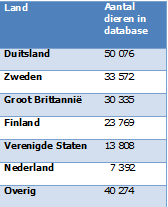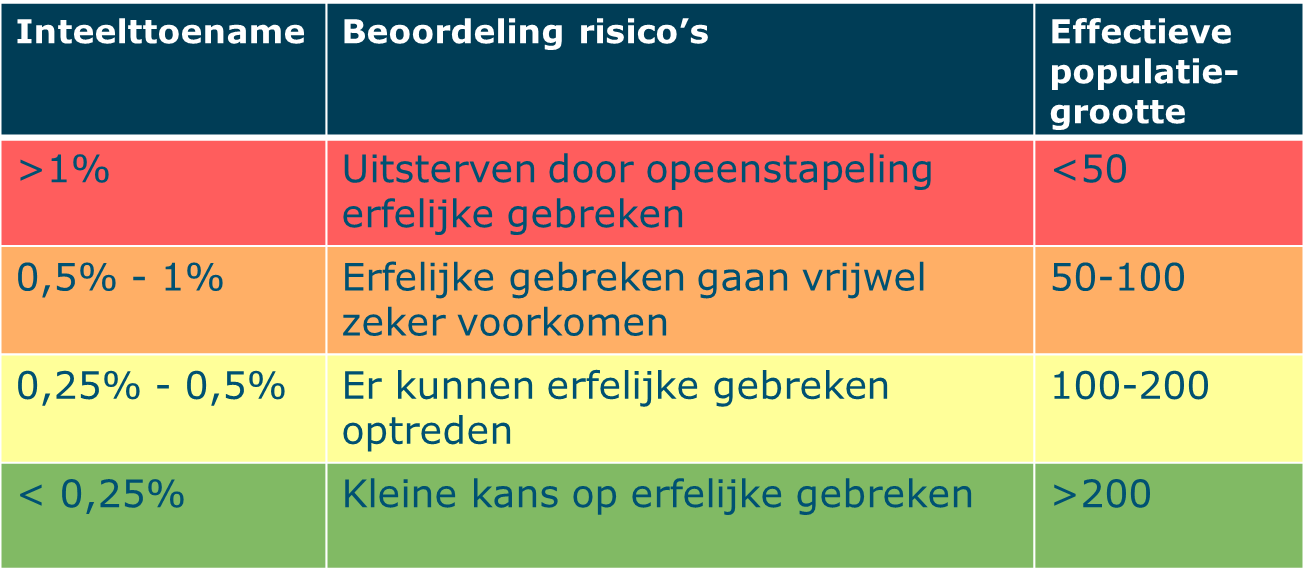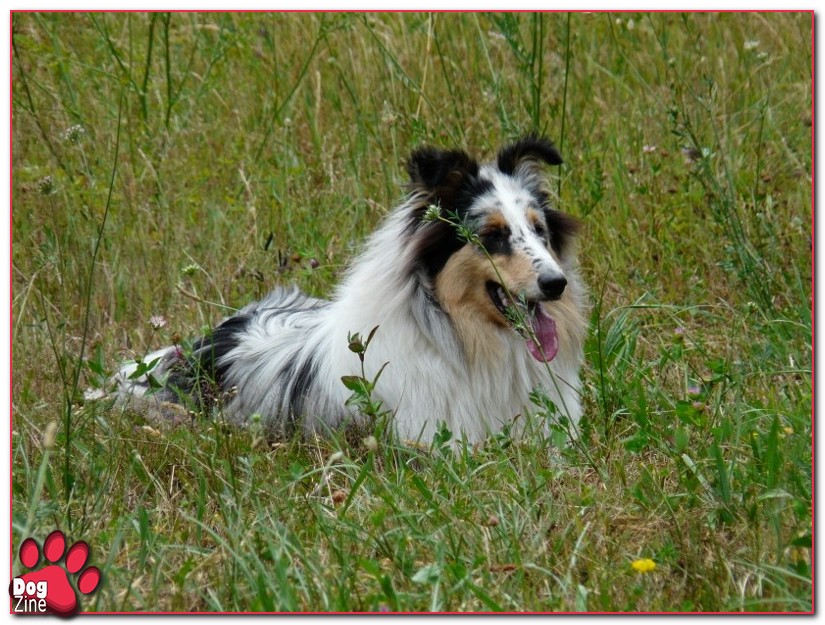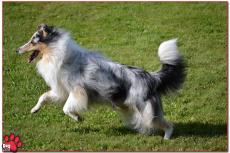Rough collie in danger, first results published
The rough coated collie seemed to be going downhill. Diseases, fewer and smaller litters, decreasing life spans, the board of the breed club called Schotse herdervrienden (Friends of the rough coated collie) was worried. They started a search for people that could look at this matter in a sensible way.
The efforts of the board finally resulted in a report that is of the highest importance in all ways. Here is how it all came about.
Dit artikel is een premium-artikel,beschikbaar voor abonnee's van ons blad en website-abonnee's. Het vervolg van dit artikel kunnen abonnees lezen.
Wilt u toegang, kijk dan hier voor de mogelijkheden
The start
The board got in touch with Wageningen University, since that is the place people developed special software for these issues. When data can be delivered out of a database contained enough animals for a proper overview it can be entered in the software program. With these data breeding can be simulated, following a specific breeding strategy. Any breeding strategy can be entered and tested this way and thus one can test how the results would be in ten, twenty five or even fifty years’ time. That way a reliable prediction can be made on specific breeding strategies; one can estimate whether or not the effects will positive for the breed.
The research also aims for a good look at the present state of affairs and how it grew into the present state. Data like this often show very clearly how often sires are used and of this resulted positively or not.
The database
 The database used for this specific research was made available by mr Ad Mommers. Since many years he kept track of things in the breed, using his contacts in both the Netherlands and many other countries. Some years ago he spent many hours entering all his data in software called Zooeasy. It was a phenomenal job the breed should be very grateful for because thanks to this database Wageningen University could get started. And that is what happened.
The database used for this specific research was made available by mr Ad Mommers. Since many years he kept track of things in the breed, using his contacts in both the Netherlands and many other countries. Some years ago he spent many hours entering all his data in software called Zooeasy. It was a phenomenal job the breed should be very grateful for because thanks to this database Wageningen University could get started. And that is what happened.
Numbers
The research started out with 216,739 dogs in the database. The time span covered 1868 to 2015 but effectively the data used were starting in 1975, because before that year the number of collies in the Netherlands was next to nothing. Data from various countries were used and ofcourse sometimes doubles were found, as were dogs with incorrect data. All dogs like that were eliminated from the database and 207,702 were left.
World wide
The population world wide is very large and at the peak of its popularity the breed had over 6000 pups yearly. That peak was in the nineties. But things started changing. The numbers decreased to about 3000 pups yearly. These numbers don’t just cover the Netherlands, because there numbers were much lower. Data show about 7-10% of the males produce offspring, 18-25% of the bitches do. The number of pups per sire vary enormously, popular sires producing over 200 pups are no exception. The most popular sire world wide produced 570 pups, in the Netherlands the most popular sire produced a shocking 545 pups.
Spreading genes
 Spreading genes was not something breeders paid a lot attention to; in 1975 average inbreeding was less than 10%, but in 1999 it had increased to 25%! Science calculated the critical limit for the increase of inbreeding on 1% per generation. Increase in collies was clearly higher in these decades: 2.8%. Population coancestry also doesn’t look that good, the reason probably is a preference for dogs from one’s home country.
Spreading genes was not something breeders paid a lot attention to; in 1975 average inbreeding was less than 10%, but in 1999 it had increased to 25%! Science calculated the critical limit for the increase of inbreeding on 1% per generation. Increase in collies was clearly higher in these decades: 2.8%. Population coancestry also doesn’t look that good, the reason probably is a preference for dogs from one’s home country.
Netherlands
In the Netherlands inbreeding is slightly higher than in the rest of the world. On average coancestry of the Dutch dogs is high: 25%. Coancestry with dogs from other countries in most cases is lower. These data show most often the breeding done is between dogs from the Netherlands. The average coancestry with the British population is slightly lower: 22%. The numbers concerning the American population seem very positive but since those data were incomplete they are considered unreliable and unsuitable for use in this research.
To be continued
Thanks to the remarkable database mr Ad Mommers provided a good view considering the present situation in this breed, something all owners and breeders should be very grateful for.
Thins as they are today give good reasons to worry, something breeders seem to realize more and more. It is striking the inbreeding seems to have stabilized since about ten years. It is likely the reason for this is more awareness of the dangers of inbreeding.
Since the populations in other countries provide possibilities for breeding t certainly is worth the trouble to look for breeding stock abroad as a way to hang on to the stabilization of the inbreeding numbers and try to decrease these numbers if possible.
The percentages found are high and therefore good breeding strategies are very important. Wageningen University isn’t done yet; people are working on a follow-up to map issues better and even more clear.
 Meanwhile the breed club Vereniging Schotse Herdervrienden will continue to work on an advising breeding strategy to manage genetic diversity in the breed as well as possible.
Meanwhile the breed club Vereniging Schotse Herdervrienden will continue to work on an advising breeding strategy to manage genetic diversity in the breed as well as possible.





